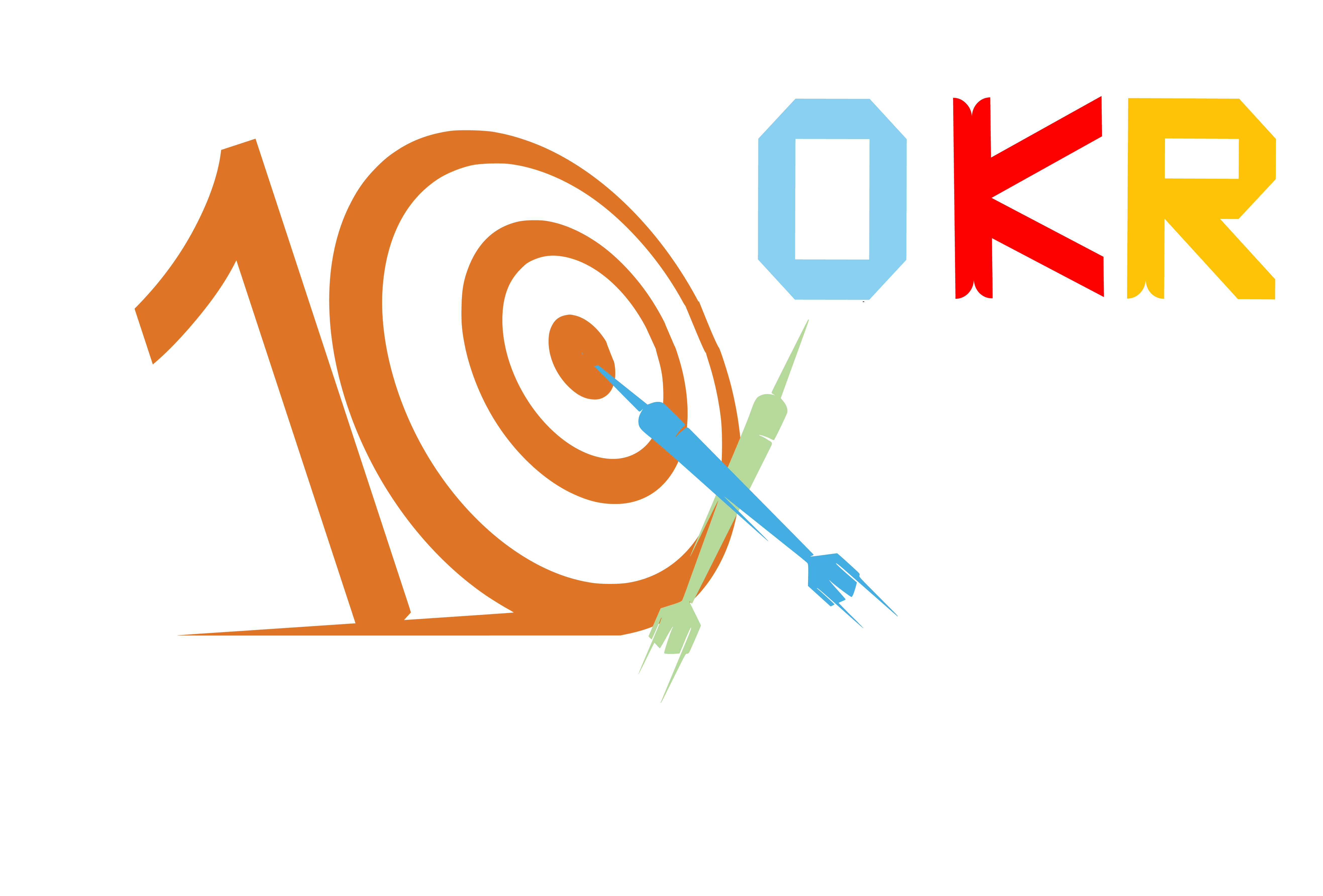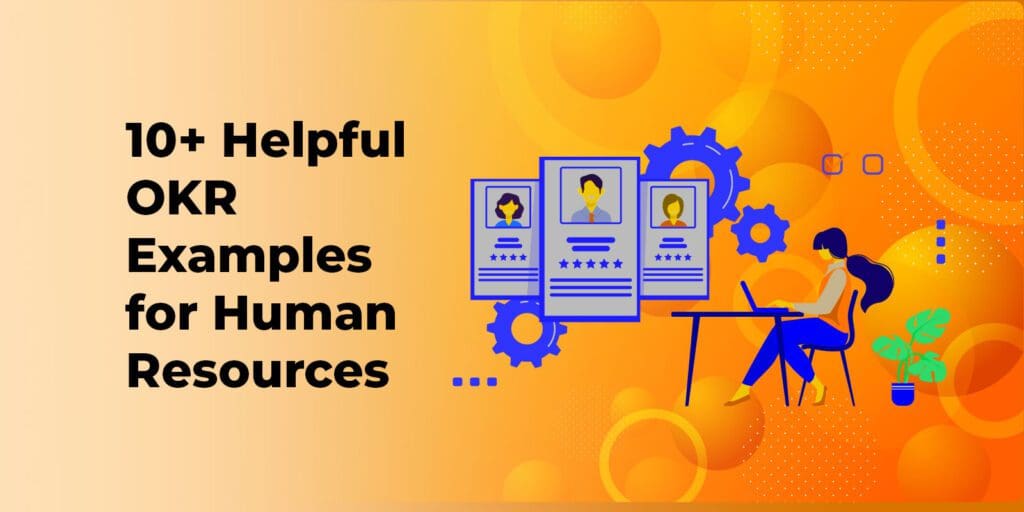Table of Contents
11+ Inspiring OKR Examples To Set The HR Stage
The Human Resources (HR) department is the heart of a company. They ensure employees who keep the company running are satisfied, seen, and heard. Since the HR teams are usually assigned multiple demanding tasks, they can achieve them step-by-step with proper focus and alignment using the OKRs (Objectives and Key Results), a goal setting framework.
In this blog, let’s take a look at how HR OKRs ensure goal-setting and the creation of a high-performance team.
Why is The Human Resources Team Important for Any Organisation?
In order for an organisation to succeed, the HR personnel is crucial. HR can assist in increasing employee productivity, morale, and engagement by ensuring that the company has the appropriate people in the proper jobs and by giving them the training and development they require to be successful.
Why the HR Team needs OKR?
HR teams need OKRs (Objectives and Key Results) for a number of reasons. Here are a few of the most important:
- The HR staff uses OKRs to assist them in matching their objectives with those of the company.
- The HR team uses OKRs to track its progress towards its objectives.
- By establishing OKRs, the HR staff and other departments’ communication may be enhanced.
- OKRs help accountability across the HR staff.
- OKRs help the HR team’s choices.
Examples of OKR for the HR Department
In order to pick an area of focus for HR OKRs, the company culture, organisational needs and overall employee engagement needs must be understood. This can include identifying key areas for growth, maintaining balance in current momentum and aiming to achieve excellence in all areas of the company. HR teams can then create targeted and data-driven goals for their OKR framework.
1. To increase the number of job offers accepted by applicants
- Objective: Increase the number of job offers accepted by applicants by 15% by the end of the month.
- Key Result 1: Ensure that at least 20% of candidates reach the offer stage by promising training sessions
- Key Result 2: Conduct 40 interviews by the end of the week for all the open positions
- Key Result 3: Reduce hiring and interviewing time by 10%
2. To Create a world-class employee training program
- Objective: Create a world-class employee training program for our company
- Key Result 1: Ensure that a planned schedule is distributed to all new hires within the first week
- Key Result 2: Improve onboarding employee satisfaction score from 10 to 30
- Key Result 3: Decrease the new-hire failure rate from 40% to 15%
3. To Improve the employee retention rate
- Objective: Improve employee retention rate
- Key Result 1: Improve employee net promoter score (eNPS) across the board from 10 to 30
- Key Result 2: Boost employer brand recognition through social media marketing from 20 to 50 points
- Key Result 3: Conduct a company-wide survey to measure employee engagement and increase it by 10%
4. To Increase the number of diverse candidates hired
- Objective: Increase the number of diverse candidates hired by the company to appeal to a wider audience
- Key Result 1: Approach with a partnership offer with 3 diverse organisations to welcome more diverse hires
- Key Result 2: Host a virtual event that celebrates the cultures and values of the diverse employees
- Key Result 3: Conduct 2 diversity training programs every quarter.
5. To Provide continuous feedback from the HR department
- Objective: Provide continuous feedback from the HR department to ensure employee dedication
- Key Result 1: Ensure that managers are conducting 1:1 meetings with every employee with a 2-way feedback
- Key Result 2: Implement a unique 2-way closed-loop feedback process for 100% of Sales employees
- Key Result 3: Provide a 5-page performance management review with at least 10 constructive criticisms
6. To improve productivity
- Objective: Improve HR department productivity by 25% in Q4.
- Key Result 1: Implement a goal-setting program that can be completed by the end of the quarter by all HR members
- Key Result 2: Track and measure HR productivity every month
- Key Result 3: Install 2 new OKR software to reduce work pressure


7. To Improve productive communication
- Objective: Improve productive communication within the HR teams
- Key Result 1: Ensure that 100% of employees are aligned with the company culture
- Key Result 2: Conduct a bi-annual communication skill assessment test
- Key Result 3: Include 1-2 communication training programs during the onboarding process
8. To Ensure OKR adoption across all teams
- Objective: Ensure OKR adoption across all teams in the company
- Key Result 1: Provide OKR training workshops for 100% of employees of all teams
- Key Result 2: Hire one OKR Coach per team to improve team collaboration and group learning efforts
- Key Result 3: Attain a 30% completion rate of objectives during the first OKR cycle
9. To Attract better talent
- Objective: Attract better talent with the benefits program
- Key Result 1: Ensure gender and racial pay equity by Q3
- Key Result 2: Implement 3 new benefits options by the end of the first quarter
- Key Result 3: Promote the benefits program through company-wide communication channels, both online and offline.
10. To Improve employee wellness
- Objective: Develop a leadership training program for managers from both the IT and Sales department
- Key Result 1: Enroll the senior managers in mentoring/coaching program and provide a 10% pay raise for their help
- Key Result 2: Create a tailored ‘Future Leaders’ training module and ensure 100% engagement
- Key Result 3: Collaborate with 2 other companies for a broader learning and training experience
11. To Invest in our employees
- Objective: Improve employee wellness
- Key Result 1: Recognise good work and encourage them with a 10% increase in internal promotions
- Key Result 2: Provide a 30% discount for the local gym to ensure at least 40% of employees engage with the employee fitness program
- Key Result 3: Provide platinum health cards to all employees with 2+ years of work experience at the company
The HR department supports the most important part of any company- the employees. By providing regular feedback, maintaining focus, and articulating the company goals, HR OKRs are strategic. They maintain company culture and track progress. They also help maintain employee wellness by giving numerous benefits.
Sign up for a free & start using OKRs to improve your HR team today!
FAQs
What defines HR OKRs from the individual goals of employees?
HR OKRs are established to promote employee engagement, talent management, and process improvements in HR. On the other hand, individual employee goals are precise objectives set by employees to support the aims of the HR department.
When should HR OKRs be tested?
Regular reviews of HR OKRs should be done, often every quarter. HR teams can track progress, make corrections, and ensure alignment with the organisation’s changing demands via regular reviews.
How does HR OKRs aid decision-making using data?
HR departments may boost the success of an organisation by measuring pertinent metrics and developing those outcomes.



